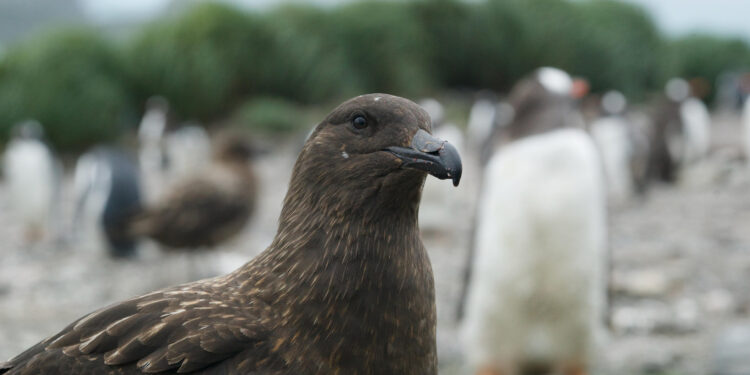Birds in Antarctica. Photo credit: Ashley Bennison
A team of virologists from the UK Animal and Plant Health Agency, working with colleagues from the British Antarctic Survey, KEMH Pathology and Food, Water & Environmental Laboratory and the Department of Agriculture, both in the Falkland Islands, have discovered that the global spread of the H5N1 avian influenza virus has spread to several bird species in Antarctica.
In their article published in Communication on nature, The group describes how they tested several birds for the virus in the region over the years 2022-23 and what they learned in doing so.
The H5N1 avian flu virus, as its name suggests, primarily infects birds, although it has been observed in a few mammals, including humans. It was first observed in 1959 and again in 1997. Early outbreaks were stopped by mass culling of animals in infected areas.
More recently, infections have become widespread, infecting birds, both wild and domestic, around the world. Billions of birds have been killed so far, and there is no sign that the pandemic is slowing down. In the new study, researchers found that the virus has even spread to birds living in Antarctica, a place on the planet that is generally free of such outbreaks.
The researchers traveled to several sub-Antarctic and Antarctic sites and tested the birds living there, finding infected birds in every place they visited. They also noted that the virus infected many species, from Antarctic terns to South Georgia cormorants to brown skuas. They also found that the virus had infected several marine mammals, such as the southern elephant seal.
By performing a genetic analysis of the discovered viruses, the research team was able to determine that the virus had spread to the sub-Antarctic region (probably via migratory birds) from South America and then to Antarctica. The team also tested two penguins, one king and one southern rockhopper penguin, and found no evidence of infection.
The research team concludes by noting that it is not yet known what kind of impact the virus is having on bird populations in Antarctica, but that their work highlights the need for more research in the region.
More information:
Ashley C. Banyard et al., Detection and spread of highly pathogenic avian influenza virus H5N1 in the Antarctic region, Nature Communications (2024). DOI: 10.1038/s41467-024-51490-8
© 2024 Science X Network
Quote:H5N1 avian influenza virus detected in several bird species in Antarctica (September 4, 2024) retrieved September 4, 2024 from
This document is subject to copyright. Apart from any fair dealing for the purpose of private study or research, no part may be reproduced without written permission. The content is provided for informational purposes only.



